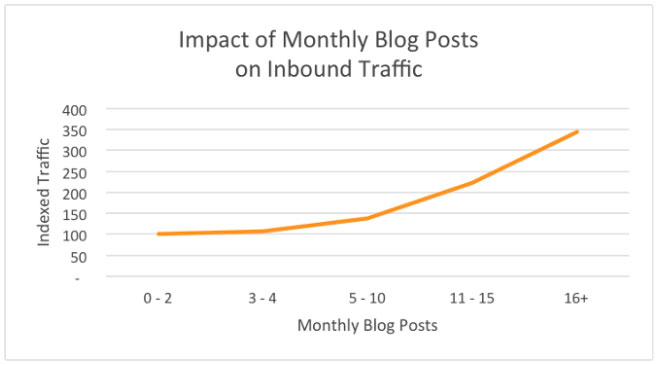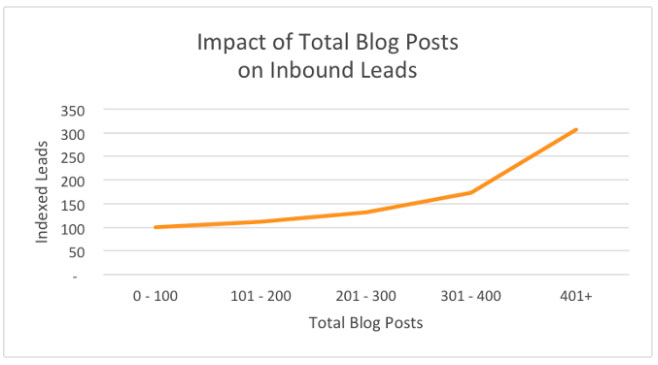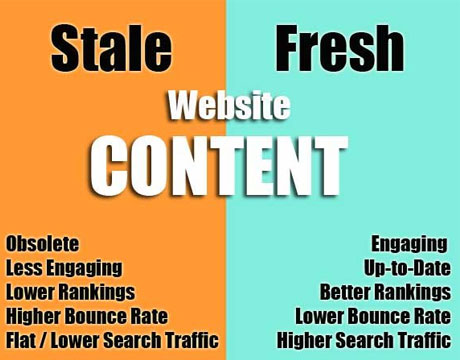
Have you ever wondered how often you should create new content for your company’s engineering website? Unfortunately, there’s no universal answer. Variables such as your industry, your target audience, and your in-house resources directly affect the perfect writing frequency for your business. The good news is that data exists that can help you determine how many articles per month you should publish.
In this article, we’ll explore some benefits of regular content posting and guide you through some of the data when it comes to posting new articles.
In the long run, regular articles are extremely valuable. With them, you attract new customers by educating them on something new, and providing insights relevant to your engineering sector. Over time, your audience and customers will see you as knowledgeable, and as a reputable source of information. Once you earn their trust, you will earn their business as well.
The good news is – the articles on your website will show results for a long time after publishing. Your potential customers can find older posts through social media, or by doing a simple online search on the topic you have covered. Older posts can be updated, or reinvigorated at any time. This means you can get a long term return on your initial investment.
The great thing about articles is that they’re not only reserved for your website. You can share them across social media channels, and even promote them to your target audience through paid ads to generate more traffic.
You might be thinking that you do not have enough time or resources to write, but by the end of this post, you’ll understand that articles are worth investing in. In fact if you’re not posting regularly, you could well be falling behind your competitors.
In short: regularly.
Let’s be honest, posting once every 4 months is a waste of time. Hubspot recently found that companies who post 16+ times per month, enjoy a massive 3.5x more traffic than those who post content 0-4 times per month (Fig.1).

Figure 1. Graph showing the impact of monthly blog posts against inbound traffic. Companies who post 16+ times per month accumulate up to 3.5x as much traffic. Source: Hubspot Benchmark Data
Not only do the websites that publish more posts per month receive more traffic – they go on to attract more inbound leads. On average, these companies get 4.5x more leads in fact, which means they have more opportunities to turn those leads into customers and brand advocates.
Posting 16 times a month means posting around 4 times per week, and we understand that some companies might not have enough resources to create articles at this frequency. If that’s the case, you should focus on producing quality articles at least once a week to start off.
The once-per-week frequency will help you keep your website fresh. Additionally, your customers and followers will get used to you posting weekly and so you’ll build anticipation to ensure they keep coming back to your website to check for new articles.
Hubspot’s Benchmark data also shows that companies with 401+ total posts also receive 3x more leads that those with only 0-100 on their website (Fig.2). This means that you need to have a long term view, and that it’s important to start sooner rather that later. The old adage is true ‘ the more you put in – the more you get out’.

Figure 2. Graph showing the impact of total blog posts against leads. Companies with 401+ posts receive almost 3x more leads than those with less than 100 posts. Source: Hubspot Benchmark Data
By creating content on a weekly basis you will be in a better position to produce high-quality articles, supported by relevant data and your experience in the engineering industry. These articles are essential if you’re looking to establish your engineering brand as a trusted source and an industry leader.
Your audience loves regular content, and so do the search engines. Frequent posting means frequent indexing. If search engine bots are able to find fresh, quality articles on your website, your chances of ranking higher will grow.

Image Source: SEO SiteCheckup
Creating engaging content on a regular basis is a tedious job when you have to cover other tasks as well. We get it. That’s why Engineering Copywriter was created. However, this consistency is the key to running a successful website that ranks well and brings in more leads.
For starters, aim to post content once per week. Your website will grow, and with experience, you can start posting articles two or three times per week. You should keep testing though. Try out different posting intervals until you find the one that is best suited for your audience.
Determining a perfect writing frequency can be a tough job. When you start planning, take into consideration your team’s size, your marketing goals, your resources, and do the research. If you simply do not have the resources to push quality content every other day, you should at least start by publishing a lower amount of highly valuable content – at least once a week.
Remember though, this is a long term strategy. Consistency is key over the long run. Although it takes time to build, the rewards and return on investment have huge potential for your business.
How often do you post articles on your website? Which tactics have proven to be good for your business? Let us know in the comments, or reach out to our team to find out how we can help you.
Content marketing helps marketers showcase their brand's value while also building trust with...
The digital age has transformed the way marketers engage with B2B audiences. As...